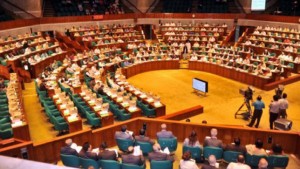by John Weeks on 9th September 2019 @johnweeks41
Some orthodox economists predicted fiscal austerity would build confidence and so foster recovery. Yet at the end of the lost eurozone decade recession looms once more.For a decade sustained economic recovery from the great financial crash of 2008 has eluded the European Union and many of its member states. Commentators offer different explanations for the disappointment of each hesitant economic recuperation failing to achieve its potential. The consensus view of the recent recessionary risk, manifest in contraction of the German economy, assigns cause to threats to world trade caused by the US government’s aggressive mercantilism.
A sharp contraction in intra-eurozone trade provides superficial support for this explanation. The reverse comes after a decade of slow expansion of intra-EU commerce compared with extra-EU exports and imports. Yet while each incomplete recovery has its conjunctural explanation, repeated failure suggests a causality common to the entire decade of the 2010s.
Fiscal austerity provides that causality. Formally begun in 2011, via conditionalities associated with loans to the Greek government to restructure largely French and German banks, the European Commission applied programmes of austerity successively to Ireland, Italy, Portugal and Spain. In addition, several governments of northern-European countries adopted fiscal austerity out of ideological commitment.
Balanced budgets
The term austerity is frequently used to refer to fiscal restraint in general. As I explain in my new book, The Debt Delusion, in the EU over the last decade it has assumed a specific meaning—fiscal policy driven by the goal of balancing total expenditure and total revenue, with no net borrowing. Since 2010 several countries have enshrined balanced budgets in their constitutions, for example Italy and Spain.
Adhering to any such budget rule, whatever the specific deficit limit, eliminates the countercyclical role of fiscal policy by rendering expenditure endogenous to growth. Because almost all government revenue is income-related, quantitative fiscal rules make the level of public expenditure derivative of that of output. This ‘endogenising’ of expenditure means that the government budget cannot contribute to growth. In practice quantitative fiscal rules actually depress growth.
This decommissioning of active fiscal policy has occurred while monetary policy has been focused almost exclusively on price stability (inflation of 2 per cent or lower targeted by the European Central Bank) and exchange rates have been left to the market to determine. With the three major areas of macroeconomic policy thereby rendered passive, EU governments have in effect been left with no instruments to foster growth.
’Expansionary austerity’
The International Monetary Fund among others has challenged the critical view of fiscal austerity as growth-depressing, with the hypothesis of ‘expansionary austerity’. While severely criticised to the point of ridicule, this counter-intuitive analysis remains influential, at least among those ideologically committed to limiting public expenditure and government intervention in mixed economies such as those of the EU.
Because of the complexity of aggregate economic interactions, empirical verification of the austerity arguments remains difficult. A test is required which isolates fiscal austerity from all other causal factors. Statistical techniques do exist which formally achieve this isolation (‘holding other things equal’) but they do not eliminate the challenge of specifying modelling assumptions.
In place of a formal modelling exercise I therefore suggest a comparison of the economic performance over an extended period of EU countries divided between those in the eurozone and those with their own currencies. This division has its justification in the limited ability of the commission to enforce the Excessive Deficit Procedure on non-eurozone governments. The key difference is that governments operating national currencies can borrow from their central banks to finance fiscal deficits.
Not controlling for country characteristics—frequently called ‘fixed effects’ in statistical work—is an obvious drawback of this comparison of groups. However, the formal attempt to do so usually involves assigning rather unenlightening binary variables to countries.
I ask the straightforward question: is there evidence that economic growth has substantially varied between eurozone countries, where fiscal-austerity policies have been applied and enforced through formal programmes, and national-currency countries, in which austerity has been less systematic? The graph below inspects that question for 2007-19, using indices of the weighted average of gross domestic product across each group.
Substantial divergence
For the first five years, 2007-11 inclusive, the two indices come close to a complete coincidence. The final quarters of expansion show almost identical increases, as does the following contraction. Over the next eight years beginning with the introduction of austerity programmes, however, the averages for the two groups diverge substantially, with the non-eurozone group growing by 20 per cent (an eight-year compound annual growth rate of 2.3 per cent) and the eurozone group by 9.7 per cent (an annual 1 per cent equivalent).
The comparison is consistent with the hypothesis that austerity substantially contributed to depressing growth. These results carry no implication about the wisdom of membership in the eurozone or ECB management of the common currency, except for the possible depressing effects of the 2 per cent inflation target.
The comparison supports the contention that an expansionary—or at least non-contractionary—fiscal policy would have resulted in a stronger and more sustained recovery from the financial crash of 2008. Indeed, to the extent that eurozone membership facilitated intra-group dynamics, fiscal expansion might be more effective among common currency users.
Yet in the absence of a change in fiscal policy, the shadow of recession will persist and deepen in the eurozone.
(John Weeks is an economist and professor emeritus at SOAS, University of London. He is author of Economics of the 1%: How Mainstream Sconomics serves the Rich, Obscures Reality and Distorts Policy (Anthem). – Social Europe




